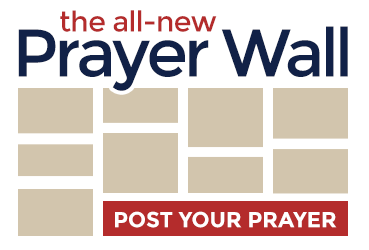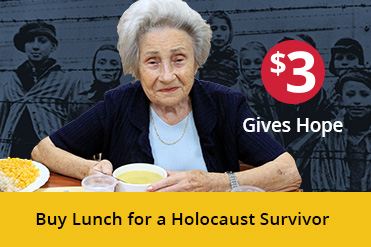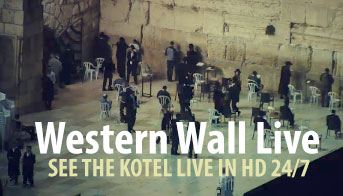As part of the law that God gave to Moses, the Children of Israel were commanded to observe seven special feasts each year. One of the purposes for these feasts was to remind God’s Chosen People of the way that He had worked in the past to deliver them from bondage in Egypt and give them a land of promise. But they also spoke to the future—the coming of the Messiah.
The Feasts of Israel align perfectly with the life, ministry, death and resurrection of Jesus…and they give us glimpses of what to expect regarding His return. Long before Jesus was born in Nazareth the sacred Scriptures foretold the who, what, where, when and why of His coming. Some of the Jewish people accepted Him as the Messiah. Others, and particularly those in leadership positions, rebuffed Him—personally and by word and deed. John the Beloved wrote, “He came to His own, and His own did not receive Him. But as many as received Him, to them He gave the right to become children of God, to those who believe in His name” (John 1:11-12).
Today those of us who are Believers can look back at the Jewish Feasts and see in them a picture of God’s plan both for His Chosen People and for the Gentiles. Jesus came not for one group or another, but to offer salvation to all. He told His disciples, “And other sheep I have which are not of this fold; them also I must bring, and they will hear My voice; and there will be one flock and one shepherd” (John 10:16). God’s plan to unite all those who believe together is revealed in the Feasts he ordered Israel to observe thousands of years ago.
In Leviticus 23:1-44 God instructed Moses on the seven major feasts that were to be observed by future generations. They were:
- Pesach – Feast of the Passover (verse 5)
- Chag HaMatzot – Feast of Unleavened Bread (verses 6-9)
- Reshit Katzir – Feast of Firstfruits (verses 10-14)
- Shavuot – Feast of Weeks, or Pentecost (verses 15-22)
- Rosh Hashanah – Feast of Trumpets (verses 23-25)
- Yom Kippur – Day of Atonement (verses 26-32)
- Sukkot – Feast of Tabernacles, or Booths (verses 33-44)
The first four feasts which were celebrated during the spring and summer months pointed to the coming of the Messiah. The symbolism in these feasts has already been fulfilled. The last three, the fall or winter feasts, are still awaiting fulfillment—and when we look closely at current events in light of God’s prophetic time clock especially as it relates to the Jewish people, it is likely that these could be fulfilled very soon.
The Feast of Passover was fulfilled by Jesus at His crucifixion. The Feast of Unleavened Bread was fulfilled when Jesus was placed in a borrowed tomb. His resurrection fulfilled the Feast of Firstfruits, and the Feast of Pentecost was fulfilled in Acts when the Ruach Hakodesh, the Holy Spirit, was poured out on Christ’s followers.
The fulfillment of the three remaining feasts will take place following the Apocalypse. The Feast of Trumpets could very well be the one that will marshal the world’s inhabitants into Daniel’s 70th week or the Great Tribulation. At the end of that seven years will come the Day of Atonement or Judgment Day when all mankind will stand before the Great White Throne to be judged and punishment meted out. The Feast of Tabernacles will mark the beginning of the Millennium when the Messiah takes His rightful place as ruler over the earth and once again dwells among men. He will come the second time, not as a Savior, but as the Conquering King.
The Hebrew word "moedim" translates to appointed times. From the foundation of the world God has had a plan based on meticulous timing. The plan was outlined through the seven feast days given to Moses. His master plan gives us the picture of the story of the redemption of mankind. His means was for the Jewish people to see the Messiah in each of the feasts which were set forth during the Jewish calendar year. In Amos 3:7, the prophet wrote: “For the Lord GOD does nothing without revealing his secret to his servants the prophets.” God began in Genesis to unfold his covenant plan and concluded it in Revelation—picture after picture of His Beloved Son, the Savior of the world.
 1. Passover
1. Passover
The story of the Passover is told in Exodus 12. The Children of Israel are about to be liberated from the bondage of the Egyptian pharaoh and God has given specific instructions for the pesach—the night the death angel is to pass over Egypt and take the firstborn of every family. To save the Israelites, God instructs them to take a male lamb without spot or blemish to accommodate the needs of one or more households.
The lamb is to be kept until the fourteenth day of the month, when the entire assembly was to slaughter each lamb at twilight. Hyssop was to be used to brush the blood of the lamb on the doorposts and the lintel of the dwelling places. Hyssop was a cleansing agent and was later used to cleanse the Temple. Its significance may well have been to show that the blood of Jesus was a cleansing agent to wash away the sins of mankind.
The Passover was to liberate the Children of Israel from slavery in Egypt. It was fulfilled when Christ liberated man from Satan and from sin. John 8:36 tells us, “Therefore if the Son makes you free, you shall be free indeed.”
The blood of the pesach lamb saved the Israelites from the Angel of Death who, as he passed over the encampment of the Israelites would see the blood on the doorposts. He would not be allowed to enter that house and strike down the firstborn—they were given life instead of death.
In John 5:24 we read: “Whoever hears my word and believes him who sent me has eternal life and will not be condemned; he has crossed over from death to life.” And in I Peter 1:18-29, the apostle wrote: “For you know that it was not with perishable things such as silver or gold that you were redeemed from the empty way of life handed down to you from your forefathers, but with the precious blood of Christ, a lamb without blemish or defect.”
 2. Unleavened Bread &
2. Unleavened Bread &
3. Firstfruits
Jesus, the Messiah, was crucified on Passover. He was taken down from the cross and buried on that same night just before the "Feast of Unleavened Bread". This was the feast that signified the sinless life of Jesus Christ, the Passover Lamb. Because He was without fault, Jesus was the perfect sacrifice for the sins of all mankind. He was like the grain of wheat in John 12:24: “Most assuredly, I say to you, unless a grain of wheat falls into the ground and dies, it remains alone; but if it dies, it produces much grain.” Leaven in the Old Testament signified apostasy or a departure from one’s principles or from the truth. It is a picture of sin. The Feast of Unleavened Bread was to point man back to a just and righteous God. The Children of Israel were directed: “For seven days you are to eat bread made without yeast. On the first day remove the yeast from your houses” (Exodus 12:15).
The "Feast of Firstfruits" pictures the resurrection of Jesus from the dead. First Corinthians 15:20 says, “But Christ has indeed been raised from the dead, the firstfruits of those who have fallen asleep.” The resurrection of Jesus demonstrates His power over death and the grave and offers us the hope of eternal life with Him. On the first day after Shabbat following the Passover, the Children of Israel were to take the very first sheaf of ripe barley or wheat to the priest. He would then wave the sheaf before the Lord as an offering. Israel was familiar with the idea of firstfruits. It was introduced to them in Leviticus—the first child, animal, wheat, barley, fruit—was holy unto the Lord and was to be presented to Him. Jesus was the preeminent First among firsts.
 4. Pentecost
4. Pentecost
The "Feast of Pentecost", also known as the Feast of Weeks, came fifty days after the end of the Feast of Unleavened Bread. It depicted the coming of the Holy Spirit and the great harvest of souls during the Church Age that would follow. The first feast marked Moses’ reception of the Ten Commandments on Mount Sinai seven weeks after Passover.
Jesus foretold this event just before His ascension: “And being assembled together with them, He commanded them not to depart from Jerusalem, but to wait for the Promise of the Father, ‘which,’ He said, ‘you have heard from Me; for John truly baptized with water, but you shall be baptized with the Holy Spirit not many days from now.’ Therefore, when they had come together, they asked Him, saying, ‘Lord, will You at this time restore the kingdom to Israel?’ And He said to them, ‘It is not for you to know times or seasons which the Father has put in His own authority. But you shall receive power when the Holy Spirit has come upon you; and you shall be witnesses to Me in Jerusalem, and in all Judea and Samaria, and to the end of the earth’” (Acts 1:4-8).
The gift of the Holy Spirit was given to the Church following Christ’s death and resurrection. The disciples followed the Lord’s instructions and returned to Jerusalem where they tarried until the Holy Spirit fell upon them. On the Day of Pentecost after being filled with the Spirit, Peter preached and three thousands Jews, many of them who lived in other countries but were in Jerusalem for the feast, believed his message that Jesus was the Messiah.
 5. Trumpets
5. Trumpets
In the Old Testament the Feast of Trumpets or Rosh Hashanah (literally the “head of the year”) was meant to mark the start of ten days of repentance in preparation for Yom Kippur, the Day of Atonement. Those two feasts were unlike the first four festivals of the spring and summer. Those were designated as days devoted to individual introspection. They were not the joyful festivals of celebration; they were days of intense self-examination. It was as sober an event as that of a guilty man standing before a judge begging for his life.
In Leviticus 23, the Israelites were charged to hold a “holy convocation.” On that day they were to blow a blast on the trumpets. It was a call to prepare to stand before God in judgment. It was a call to repent before the arrival of the Day of Atonement.
Many Bible scholars believe the Feast of Trumpets is a picture of the Rapture of the Church—the moment when Christ comes for His Bride. The Apostle Paul wrote, “For the Lord Himself will descend from heaven with a shout, with the voice of an archangel, and with the trumpet of God. And the dead in Christ will rise first. Then we who are alive and remain shall be caught up together with them in the clouds to meet the Lord in the air. And thus we shall always be with the Lord. Therefore comfort one another with these words” (1 Thessalonians 4:16-18).
 6. Atonement
6. Atonement
The Day of Atonement was not a joyful event. It was a day of national mourning and repentance. It took place on the Sabbath. No work could be done and those who ignored this dictate were cut off from Israel—a sign of eternal damnation. It was a day of humility, mourning and fasting.
On the Day of Atonement the priest laid aside his colorful robes and his jeweled vestments. He dressed instead in linen garments of white to symbolize his utter lowliness in the presence of God. He took on the garb of a slave to stand before the King of Kings in His holy sanctuary. It is reminiscent of Jesus in John 13 when He laid aside His robes and took on the role of slave to minister to His disciples.
On the Day of Atonement the high priest offered two sacrifices—one was a young bull whose blood was sprinkled on the mercy seat of the Ark of the Covenant for the sins of the high priest and his family. He would kill the bullock, enter the Holy of Holies and sanctify himself. He would then exit the Most Holy Place, kill a goat chosen by drawing lots, and then return to offer its blood for the people. This was a picture of the Messiah, our High Priest, entering the presence of God to make atonement for all humanity—one time for all.
 7. Tabernacles
7. Tabernacles
The Feast of Tabernacles was a celebration of the end of the harvest. It is accompanied by great joy and thankfulness. On each day of the feast the Hallel (Psalm 113-118) are sung. It is an end of planting and plowing, of the struggle to raise crops. The Jews build sukkah (booths) to commemorate the time they dwelt in tents and wandered in the wilderness. It was the time when God resided in a tent and “tabernacled” with His people.
The prophet Zechariah prophesied: “And it shall come to pass that everyone who is left of all the nations which came against Jerusalem shall go up from year to year to worship the King, the LORD of hosts, and to keep the Feast of Tabernacles.”
Should they refuse to obey the commandment of God, rain would be withheld—punishment for refusing God’s provision. It symbolizes a lack of blessing on those who refuse God’s offer of salvation—those who will as Proverbs 29:1 says, “suddenly be destroyed, and that without remedy.” The English Standard Version says, “Broken without healing.”
God instructed the Israelites to offer thirteen young bulls on the first day of the feast and one less each following day. In total, seventy bullocks were offered. It was also a requirement of this feast that a vessel of water and another of wine was to be poured into the trench at the base of the altar. It was symbolic of prayer for rain on which Israel so strongly depended. It was also a picture of the blood mixed with water that poured from the body of the Messiah on the cross, and also of the Holy Spirit that would be “poured out” on Believers in every nation.






